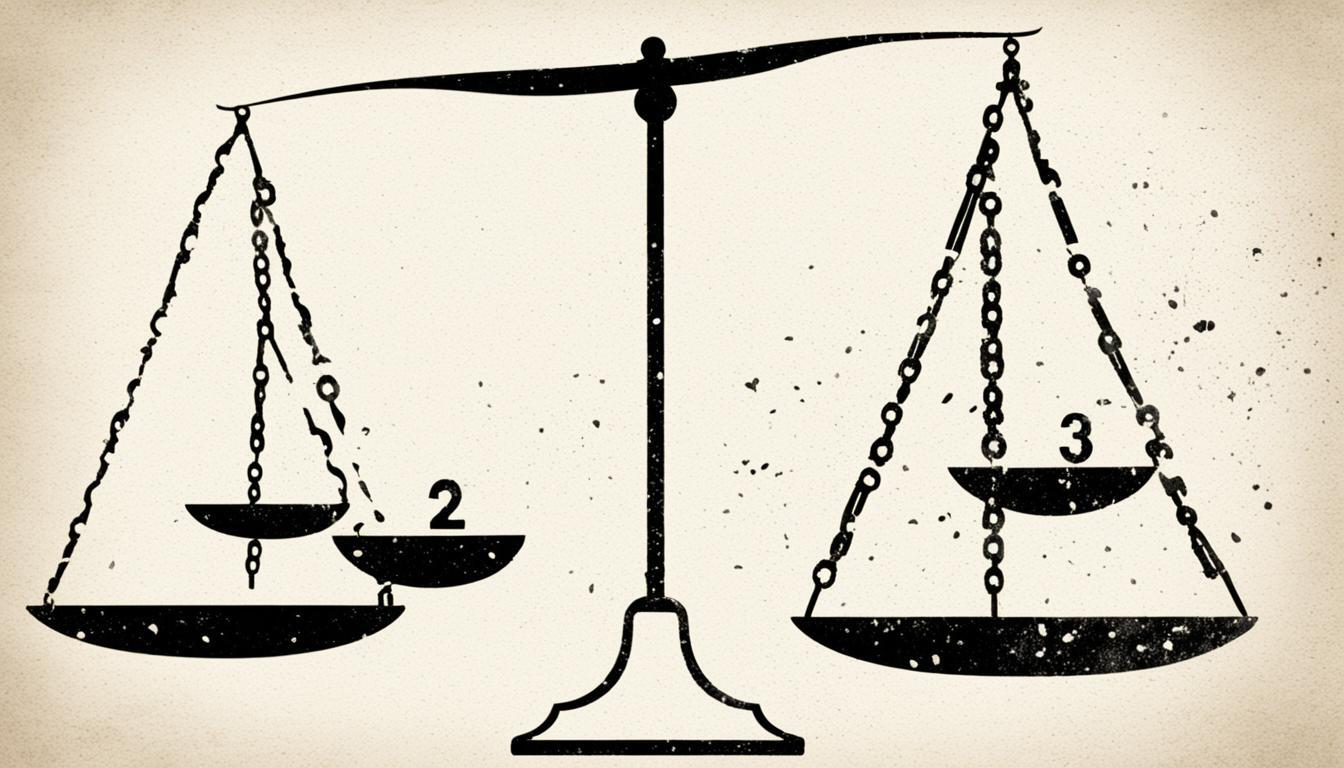Understanding Summary Conviction Basics
Did you know that in Canada, criminal offences are classified as either summary conviction or indictable offences? These classifications determine the severity of the offence and the corresponding legal procedures.
Summary conviction offences are less serious than indictable offences and are typically heard in provincial court. Unlike indictable offences, individuals charged with summary conviction offences are usually not arrested but rather given a notice to appear in court. They also have the option to be represented by a lawyer or an agent.
Indictable offences, on the other hand, are more serious and have different procedures. Individuals charged with indictable offences are typically arrested and must appear in court. They can choose to represent themselves or be represented by a lawyer.
There are also hybrid offences, where the prosecutor has the discretion to proceed as either a summary conviction offence or an indictable offence, depending on the severity of the accused’s actions.
Understanding the basics of summary conviction offences is crucial for navigating the Canadian criminal justice system. Let’s explore this topic further to gain a comprehensive understanding.
Key Takeaways:
- Summary conviction offences are less serious than indictable offences and are heard in provincial court.
- Individuals charged with summary conviction offences are usually not arrested and can have a lawyer or agent represent them.
- Indictable offences are more serious and require the accused to be arrested and appear in court.
- Hybrid offences give the prosecutor the discretion to proceed as either a summary conviction offence or an indictable offence.
- Understanding the classification of offences is essential for navigating the Canadian criminal justice system.
How to Determine the Classification of an Offence
To determine whether a charge is a summary conviction, hybrid, or indictable offence, you need to examine the Information document. This document contains the charges, the dates they were allegedly committed, and the specific sections of the Criminal Code of Canada. By reading these sections, you can determine the classification of the offence.
A summary conviction offence is less serious and carries a maximum penalty of 2 years less a day, a $5,000 fine, or both by default. These offences are typically heard in provincial courts.
A hybrid offence, as the name suggests, gives the prosecutor the discretion to proceed either as a summary conviction offence or as an indictable offence. The decision is often based on factors such as the severity of the accused’s actions.
Indictable offences are more serious crimes and have specific maximum penalties outlined in the Criminal Code of Canada. These offences are processed differently and typically require the accused person to be arrested and appear in court.
By understanding the content of the Information document and the corresponding sections of the Criminal Code, you can determine the classification of the offence and its associated legal ramifications.

Next, let’s explore the maximum penalties for summary conviction and indictable offences.
Maximum Penalties for Summary Conviction and Indictable Offences
When it comes to criminal offences in Canada, the severity of the penalty depends on whether it is categorized as a summary conviction or an indictable offence. Here’s what you need to know about the maximum penalties for each type of offence.
Summary Conviction Offences
A summary conviction offence is considered to be less serious than an indictable offence. For summary conviction offences, the maximum penalty is 2 years less a day in jail, a $5,000 fine, or both.
Let’s take a closer look at some examples of summary conviction offences:
- Shoplifting
- Mischief under $5,000
- Trespassing
These offences are typically heard in provincial court and are subject to the summary conviction penalties mentioned above.
Indictable Offences
Indictable offences are more serious crimes and carry higher maximum penalties. The specific maximum penalty for an indictable offence varies depending on the nature of the offence. For certain offences, such as uttering threats and assault with a weapon, the prosecutor has the discretion to proceed as either a summary conviction offence or an indictable offence.
Let’s consider the maximum penalties for these two hybrid offences:
| Offence | If Prosecuted as a Summary Conviction Offence | If Prosecuted as an Indictable Offence |
|---|---|---|
| Uttering Threats | Up to 2 years less a day in jail, a $5,000 fine, or both | Up to 5 years in jail |
| Assault with a Weapon | Up to 2 years less a day in jail, a $5,000 fine, or both | Up to 10 years in jail |
If an indictable offence is prosecuted as such, the penalties can be significantly higher. For example, straight indictable offences like robbery can result in a maximum penalty of life imprisonment.

Understanding the maximum penalties for summary conviction and indictable offences is crucial for navigating the Canadian criminal justice system. It’s important to consult with a criminal lawyer to ensure you have the best possible defence strategy if you are facing charges.
Modes of Trial for Summary Conviction and Indictable Offences
The classification of an offence as either a summary conviction or indictable offence determines the available modes of trial. In Canada, the criminal justice system provides different trial options based on the severity of the crime and the rights of the accused.
For more serious crimes categorized as indictable offences, the accused has the right to a trial by jury in Superior Court. This means that a panel of impartial jurors will hear the evidence, assess the facts, and make a verdict. A jury trial offers a broad representation of the community and enhances the fairness of the trial process. It also allows for a diversity of perspectives in deciding the guilt or innocence of the accused.
In addition to a jury trial, the accused charged with an indictable offence may have the option to request a preliminary inquiry. A preliminary inquiry is a court proceeding where the Crown presents evidence to determine whether there is sufficient evidence to proceed to trial. The accused is given an opportunity to cross-examine witnesses and test the strength of the Crown’s case. It serves as a mechanism to weed out weak cases and safeguard the accused’s right to a fair trial.
On the other hand, summary conviction offences are generally less serious and are heard expeditiously in lower courts, such as provincial or municipal courts. These offences do not have a right to a trial by jury and are adjudicated by a judge alone. This streamlined process allows for quicker resolution of less complex cases while maintaining fairness and efficiency in the legal system.
Hybrid offences, as mentioned earlier, offer a range of trial options. Depending on the circumstances and the prosecutor’s decision, the accused may face either a summary conviction trial or an indictable trial. The specific provisions of the Criminal Code and the rights guaranteed by the Canadian Charter of Rights and Freedoms determine the availability of these trial options.
It is important for individuals facing criminal charges to understand their rights and the possible trial options available to them. Seeking legal advice from a knowledgeable criminal lawyer can help navigate the complexities of the criminal justice system and ensure the best possible outcome.
Understanding Canadian Criminal Law
When it comes to criminal charges in Canada, the Canadian Criminal Code is the guiding legal framework based on Common Law principles. Offences are classified as either indictable offences or summary conviction offences, each with its own set of consequences. Indictable offences are reserved for the most serious crimes and carry a minimum prison sentence of 2 years, while summary conviction offences cover less serious crimes and have a maximum penalty of 2 years less a day in prison.
In order to prove someone’s guilt, the Crown prosecutor must establish two key elements: actus reus and mens rea. Actus reus refers to the physical act or conduct that constitutes the crime, while mens rea deals with the mental state or intention behind the act. The prosecutor must prove beyond a reasonable doubt that the accused is responsible for both the criminal conduct and the intent or knowledge to commit the crime.
When facing criminal charges, it is important to understand that defence strategies are guided by Common Law principles and the rights guaranteed by the Canadian Charter of Rights and Freedoms. Consulting with an experienced criminal lawyer is highly recommended to ensure the best possible defence strategy tailored to your specific case and circumstances.




















Post Comment Cancel reply